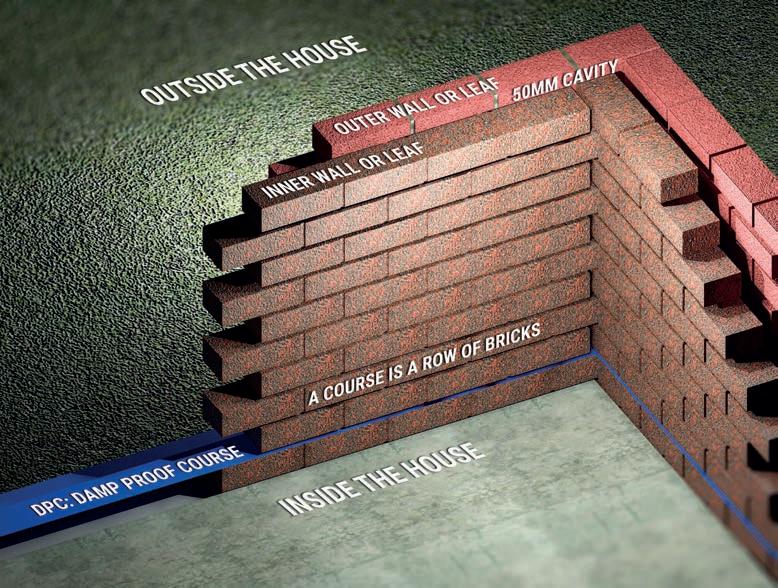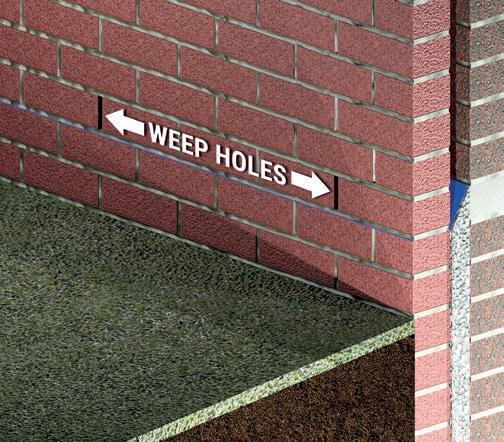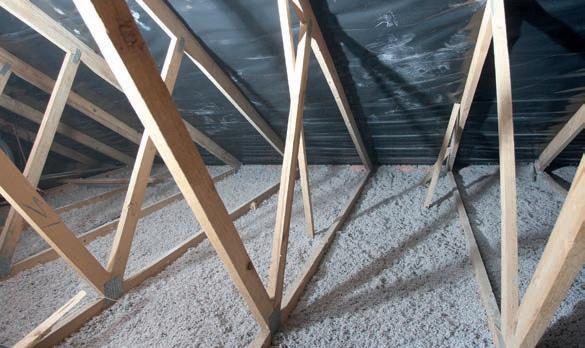
2 minute read
Efficient cavity wall construction
This is the second in a series of informative articles by the Clay Brick Association of South Africa.
Elements of a cavity wall A cavity wall is composed of two masonry walls separated by an air space or cavity.
Masonry must be laid on a level, rigid base. This is typically a concrete foundation or a beam of structural steel or concrete. The outer wall (or leaf) provides visual appeal. Clay face brick (FBA, FBS and FBX) offers a wide range of aesthetic options. The inner wall (or leaf) is usually constructed of NFP or NFX clay plaster bricks.
In between the two masonry leaves is a cavity of 50 millimetres. The gap must be consistent from the bottom of the wall to the top. This cavity must be kept free of mortar which can block water from draining away, leading to damp and mould.
The wall cavity should extend to 150mm below the damp-proof course (DPC) level. Below the damp-proof course, the cavity must be filled with fine concr ete. The Damp Proof Course (DPC) keeps moisture away from the cavity side of the interior wall. It is usually a PVC

Weep holes must be provided in the external leaf immediately above the Damp Proof Course at intervals of 100cm (or about every 4th brick horizontally).
Wall ties should be used every 450mm (every 5th course of brickwork vertically) with a maximum horizontal spacing of 600mm (every second brick).
sheet extending with a downward curve from the interior wall across cavity and through the outer wall. Its purpose is to drain away any water in the cavity towards the weep holes and discharge it outside.
Masonry bricks are held in place with mortar typically composed of cement and sand.
The cavity can be partly filled with insulation which is attached to the inner leaf. Insulation provides additional thermal performance.
The two single-leaf walls are linked to each other with metal or plastic wall ties that are permanently fixed into
the mortar of both brick leaves, crossing the cavity. The ties strengthen the cavity wall. Weep holes are drainage holes left in the exterior wall of the cavity wall. They are traditionally non-mortared gaps left between two adjacent bricks, to provide an exit point for water in the cavity. Plastic weep vents are also available.

The Clay Brick Association of South Africa www.claybrick.org













